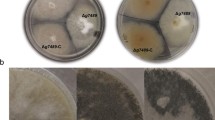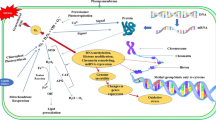Abstract.
In a screen for temperature-sensitive (37°C) mutants of Saccharomyces cerevisiae that are defective in the proper localization of the Golgi transmembrane protein Emp47p, we uncovered a constitutive loss-of-function mutation in CYS3/STR1, the gene coding for cystathionine-γ-lyase. We showed by immunofluorescence, sucrose-gradient analysis and quantitative Western analysis that the mutant mislocalized Emp47p to the vacuole at high temperature, while Golgi structures were apparently normal and biosynthetic routing of the vacuolar carboxypeptidase Y (CPY) and the plasma membrane GPI-anchored protein Gas1p were unaffected. The effect of high temperature on Emp47p localization, as well as the temperature sensitivity of the mutant strain on rich medium, appear to be caused by oxidative stress and are correlated with severe reductions in the intracellular levels of low-molecular-weight thiols. In accordance with this conclusion, cys3-2 mutant cells were more sensitive to the oxidizing agent 1-chloro-2,4-dinitrobenzene, which also aggravated the mislocalization of Emp47p observed at high temperature. Furthermore, all the phenotypes of the mutant were completely complemented by exogenous supply of the main low-molecular-weight thiol, glutathione (GSH) and, importantly, the thiol β-mercaptoethanol reversed the temperature sensitivity of the mutant. A comparison of our mutant with a mutant defective in GSH synthesis showed that gsh1 Δ cells were similar to wild-type cells under the stress conditions tested, with the exception of one novel oxidative stress-related phenotype that is observed in both cys3-2 and gsh1 Δ mutant cells – a defect in CDP-DAG metabolism upon shift to the non-permissive temperature. As most of the stress-related phenotypes of cys3-2 mutant cells are more severe than those seen in gsh1 Δ cells, we conclude that cysteine as such is required and sufficient to confer some degree of protection from oxidative stress in yeast cells.
Similar content being viewed by others
Author information
Authors and Affiliations
Additional information
Electronic Publication
Rights and permissions
About this article
Cite this article
Matiach, .A., Schröder-Köhne, .S. Yeast cys3 and gsh1 mutant cells display overlapping but non-identical symptoms of oxidative stress with regard to subcellular protein localization and CDP-DAG metabolism. Mol Gen Genomics 266, 481–496 (2001). https://doi.org/10.1007/s004380100570
Received:
Accepted:
Issue Date:
DOI: https://doi.org/10.1007/s004380100570




